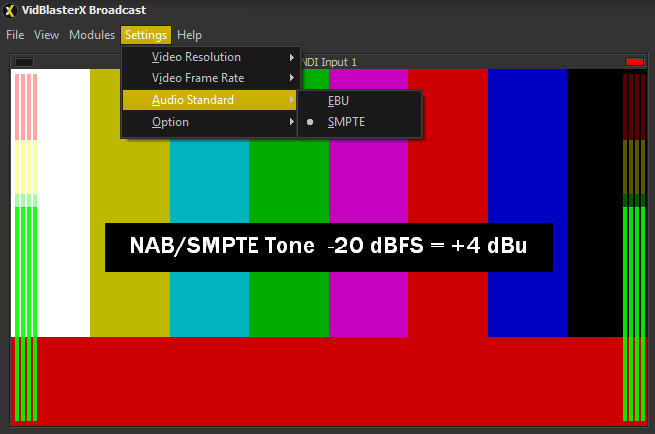The NDI Input Module
The NDI Input module is used to ingest a video stream from an NDI compatible source connected to a local network. NDI™ (Network Device Interface) is a standard created by NewTek to make it easy to develop video-related products that share video on a local Ethernet network. NDI is natively supported by VidBlasterX, no further software needs to be installed. Right click the module to open its popup menu. The following additional menu entries are available.

Source
A list of all NDI sources found on the network, grouped per machine. If the list is not up-to-date then wait a few seconds and open this menu again.
Properties > Audio Only
If many NDI audio streams need to be received, setting this flag will save resources by stopping video decoding and display.
Properties > Frame Buffer Size
Because NDI does not offer a steady stream of video frames (networks don't guarantee that) a PLL is used to retrieve a stable clock. The size of its buffer is selected here (default 2 frames). The trade-off here is frame dropping vs. latency and the best setting will depend on the quality of your network. If it is not possible to use flow control in your network, a buffer size equivalent to 300 ms may be necessary to overcome TCP ACK timeouts.
Properties > Hold Last Frame
By default NDI streams are assumed to be clocked video streams and video will turn to black if sufficient frames are lost. By enabling this option the last frame will remain displayed indefinitely. This option is required when using NDI tools like Scan Converter which only send intermittent video frames.